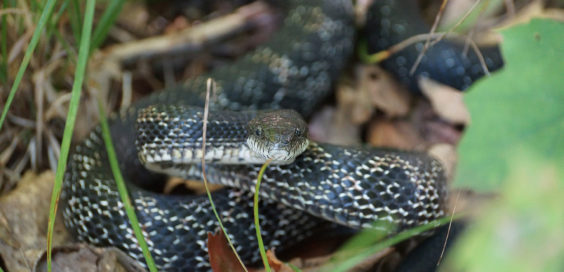
Creature Feature – The Black Rat Snake & Mimicry
Posted by Dustin Horton // October 31, 2019 // Articles, Creature Feature
Like neighborhood kids dressed up as someone or something else on Halloween, there are wild creatures that practice the art of disguise, too. They exhibit certain physical characteristics or behaviors that imitate other things in order to gain some benefit. This is called “mimicry,” and it enhances survival.
The black rat snake can grow very large, often over 6 feet long. While it may be hair-raising to encounter one dangling from a tree, this snake is neither venomous nor aggressive. It also packs a powerful punch to the rodent population, making it a very good neighbor (vermin spread diseases like Lyme and Leptospirosis). When threatened, the rat snake often shakes its tail, mimicking the poisonous rattlesnake. It does this to frighten predators away, as it knows most animals avoid rattlers. When a harmless species imitates a harmful species, it is known as “Batesian mimicry.”
Ironically, while the rattling ruse of the rat snake often protects it from other animals, it is sometimes killed when people are fooled into believing they are facing a venomous rattlesnake. This is unfortunate, as the rat snake plays a valuable role in a healthy ecosystem.
Article & Photo by Margie Manthey













